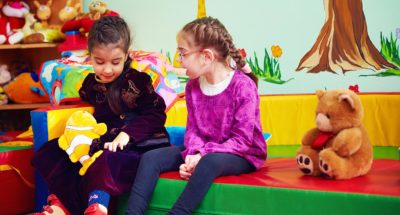
Sharing Gratitude Stories
Pairs of students tell each other about a time they each felt grateful.

Pairs of students tell each other about a time they each felt grateful.
Students will:

“Nurturing Gratitude From the Inside Out: 30 Activities for Grades K–8” was originally developed by The Inner Resilience Program, in partnership with the Greater Good Science Center and the John Templeton Foundation.
For the entire curriculum, click here.
Do you notice whether students are kinder to each other? Are they expressing gratitude or talking about acts of kindness more often?
One study discovered that mainly affluent white students who were taught to think gratefully by considering the costs, benefits, and intentions behind a kind act were found, in comparison to a control group, to be happier and more grateful, and to show more grateful thinking. They also were more likely to write gratitude letters to PTA members.
Reflecting on a kind act that someone did for them can help boost students’ self-esteem — because it shows that they matter to that person. When, in particular, they focus on someone at school, it may increase students’ sense of belonging — a key factor to students’ academic success and overall well-being.

Are you ready to build a kinder, happier school where everyone belongs? Join Greater Good Educators! Explore the science of well-being in a supportive community of educators from around the world. Registration is now open for the 2025-2026 school year!
Comments